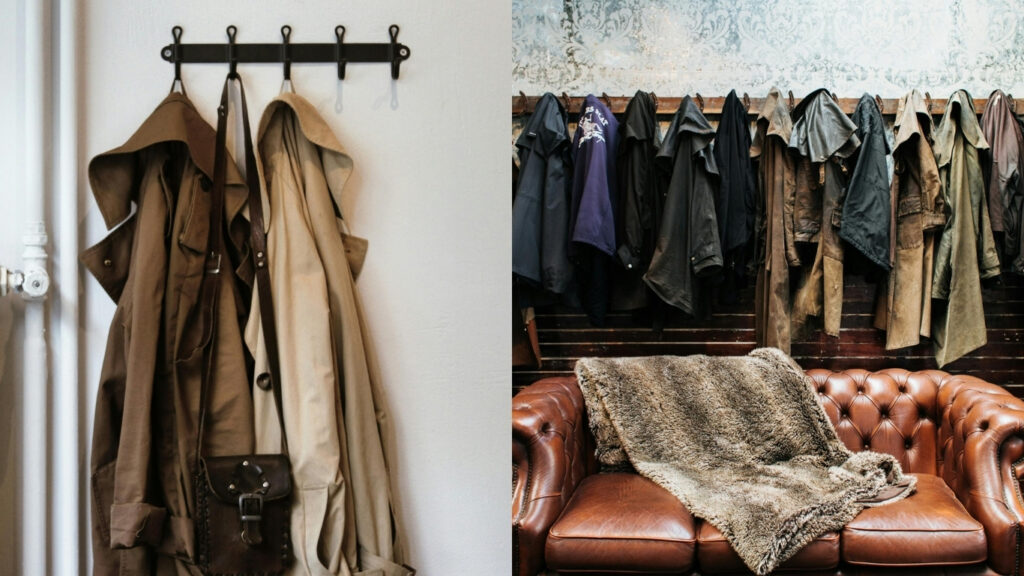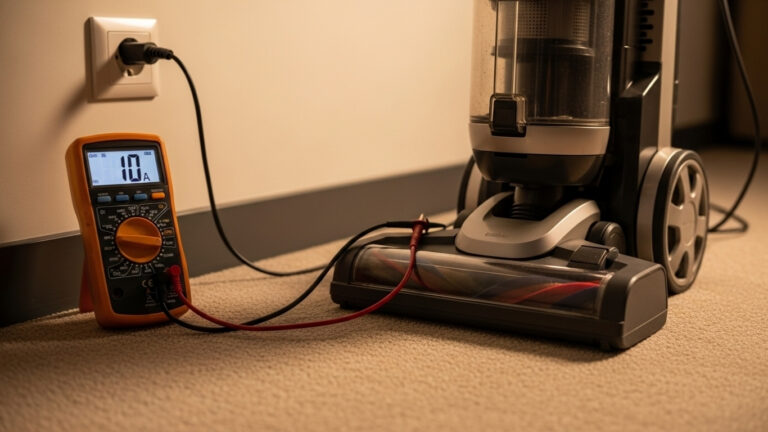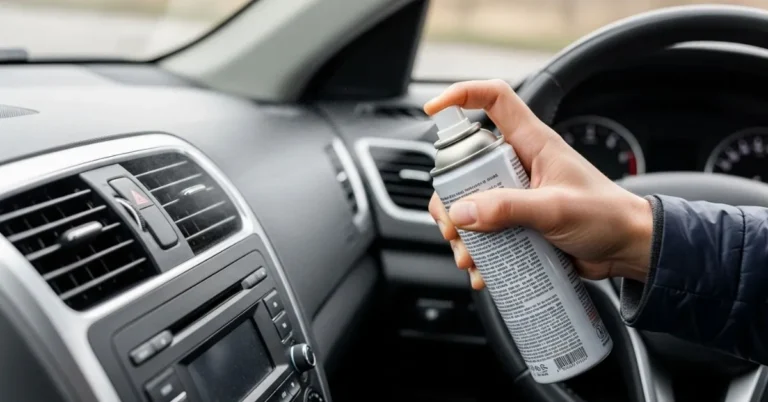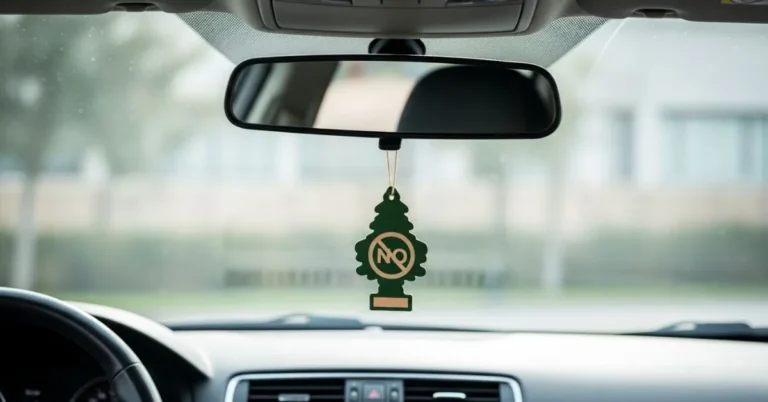We’ve all been there. You walk through the front door juggling your coat, bag, umbrella, and possibly your toddler’s shoe (because somehow they always take one off mid-walk). You look around for a place to toss everything and realize you still haven’t hung that coat rack.

Why not? It’s probably because you’re renting, not in the mood to bust out a drill, or you don’t want to risk damaging that freshly painted wall.
Good news: You can have a tidy, stylish entryway without leaving holes, cracks, or regrets behind. This guide will show you how to hang a coat rack on the wall without damaging it, using clever, budget-friendly solutions that are just as sturdy as simple.
Let’s explore how to keep your coats off the floor and your walls untouched.
Contents
- 1 Why No-Damage Hanging Is the Way to Go
- 2 What You’ll Need: Wall-Friendly Hanging Supplies
- 3 How to Hang Coat Rack on the Wall Without Drilling
- 4 A Semi-Permanent Option: No-Drill Wall Anchors
- 5 An Easy Alternative: Freestanding or Leaning Coat Racks
- 6 How to Hang Coat Rack on Brick, Tile, or Glass
- 7 Sustainable and Stylish Choices
- 8 Style It Like a Pro
- 9 Common Mistakes to Avoid
- 10 Frequently Asked Questions
- 11 Experts Thoughts: Style Without the Stress
- 12 About the Author
Why No-Damage Hanging Is the Way to Go
There are plenty of reasons to avoid drilling into your walls. For one, landlords don’t exactly love extra holes. If you’re renting, you’ve probably heard the dreaded phrase: “That’ll come out of your deposit.”
Even if you own your home, drilling into certain surfaces (plaster, tile, brick) can be risky or irreversible. Not to mention, sometimes you want the flexibility to move things around without having to patch and repaint later.
That’s where these no-damage hanging solutions come in handy. They’re easy, affordable, and surprisingly strong.
What You’ll Need: Wall-Friendly Hanging Supplies
Here’s a quick list of what you might need, depending on your coat rack and your wall type:
- Heavy-duty adhesive strips (like Command picture hanging strips)
- Double-sided mounting tape
- Removable adhesive wall hooks
- No-drill wall anchors
- Measuring tape, level, pencil
- Rubbing alcohol or mild cleaner for surface prep
- Lightweight coat rack (preferably under 10 lbs)
Tip: Choose a coat rack that’s lighter and flat-backed for easier mounting with adhesives.
How to Hang Coat Rack on the Wall Without Drilling
1. Find the Right Spot
Pick a place where your coat rack will be the most useful, usually near the front door or in a hallway. Use a measuring tape and level to mark where it will go. Remember the height: You’ll want hooks that are easy to reach but high enough that coats don’t drag on the floor.
2. Clean the Wall Surface
The adhesive will not adhere properly to dusty or greasy walls. Clean the area with rubbing alcohol or a damp cloth, then allow it to dry thoroughly before applying any adhesive.
3. Apply Your Adhesive Method
- Command Strips: These come in different strengths and sizes. Attach the strips to the back of the rack and the wall, press for about 30 seconds, and let them set for at least an hour before hanging anything.
- Double-Sided Mounting Tape: This tape is excellent for lighter racks. Stick several strips along the back of the rack, then press firmly against the wall for 60 seconds.
- Adhesive Wall Hooks: If your coat rack doesn’t mount flush to the wall, consider hanging it from removable wall hooks that match the weight capacity.
Reminder: Always check the weight limits on the packaging. For long-term success, go lighter than the max.
A Semi-Permanent Option: No-Drill Wall Anchors
If you don’t mind making tiny holes that are easily patchable later, consider twist-in wall anchors. These screw directly into drywall without any drilling. They’re ideal for heavier coat racks and easy to remove and cover when you move out.
- Mark your spots
- Twist the anchor into the wall
- Insert screws into the anchors and mount your rack
- Patch with putty and touch-up paint when needed
This approach gives sturdier support and works well in spots where coats get grabbed often.
Read More: How High to Hang Coat Rack: Expert Tips for Every Room
An Easy Alternative: Freestanding or Leaning Coat Racks
If wall-mounting sounds like a hassle, freestanding options are worth a look. A leaning ladder rack or coat tree adds instant function without touching your walls.
They’re ideal for renters, small spaces, and anyone who likes to rearrange furniture on a whim.
Plus, many models come with bonus storage, like shelves or shoe cubbies underneath.
How to Hang Coat Rack on Brick, Tile, or Glass
Different surfaces call for different solutions:
- Brick walls: Try brick clips that clamp onto the mortar without drilling.
- Tile or glass: Use suction cup hooks or adhesive strips for smooth surfaces.
- Wallpapered walls: Test first. Some adhesives may cause peeling. Stick to the lightest racks possible and remove slowly if needed.
For all of these, surface prep is crucial. Clean thoroughly and allow drying time for the adhesive to work correctly.
Sustainable and Stylish Choices
Want your damage-free coat rack setup to be kinder to the planet, too?
- Look for racks made from bamboo, recycled plastic, or reclaimed wood
- Choose reusable adhesive hooks or products with minimal packaging
- Skip plastic drywall anchors and go for biodegradable options when possible
Sustainable choices often come with stylish, minimalist designs that blend beautifully with most home decor styles.
Style It Like a Pro
Your coat rack can be functional and fabulous. Once it’s up, create a welcoming entryway by adding:
- A mirror or art piece above it
- A rug or small bench underneath
- Decorative baskets for shoes, gloves, or umbrellas
- Matching hooks or hangers for visual consistency
Turn that coat rack into a full-blown entry moment.
Common Mistakes to Avoid
Before you grab those hooks, keep these no-nos in mind:
- Don’t apply adhesives to fresh paint or dirty walls
- Don’t skip measuring it’ll look off if it’s even a little crooked
- Don’t hang heavy items right away give adhesives time to bond
- Don’t guess the weight limits check, then double-check
Doing it right the first time means your rack stays up for the long haul.
Read More: How High Should a Coat Rack Be? A Quick Guide for Every Home
Frequently Asked Questions
Can I use Command Strips for any coat rack?
Yes, as long as the rack is relatively lightweight and has a flat back. Avoid heavy wood or metal racks unless they’re rated for higher-weight strips.
Will the adhesive damage the paint when removed?
If used properly, no. Most high-quality strips peel off cleanly. Blast the adhesive with a hairdryer on low heat to loosen it up for a smoother peel-off.
What if I want to hang something heavier?
Try no-drill wall anchors or freestanding racks. Heavier racks need more support than adhesives alone can provide.
Are these methods suitable for kids’ rooms?
Absolutely. Adhesive hooks are a safe choice for children’s spaces to ensure everything is securely installed and within reach.
Do I need to wait before using the rack?
Yes, most adhesive products recommend waiting an hour before hanging items. Some work best after 24 hours.
Experts Thoughts: Style Without the Stress
Whether you’re in a temporary space or want to avoid holes in your walls, knowing how to hang coat rack on the wall without damaging it gives you the freedom to decorate without worry.
From adhesive strips to leaning racks, there’s a solution that fits your space, style, and comfort level. With some planning, you’ll turn that bare wall into a clutter-free, coat-friendly zone that looks good and keeps your walls safe.
So go ahead, hang that rack. Your future self (and your landlord) will thank you.







